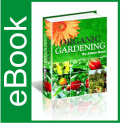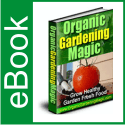Indoor and Outdoor Vegetable Gardens
Indoor and Outdoor Vegetable Gardens
Article by Andre B
Vegetable gardens are the new must have for the thrifty homeowner. Fuel prices have played a direct role in the increase of food costs, which, according to the U.S. Vegetable gardens are also grown around several buildings by local gardeners in keeping with nineteenth century custom. Gardens and houses are connected by a series of walkways constructed of bricks recycled from the original foundations of the park’s historic structures. Vegetable gardens are unlike any other garden on your property. These gardens can be as attractive as a flower border — with many different types of plants: annuals and perennials, and warm-season and cool-season plants. Vegetable gardens are tucked away in all kinds of places. A gardener will eventually find some crops that produce well on most sites. Vegetable gardens are other edible landscaping devices that can look very attractive. They, too, can be planted in a variety of climates, and can be grown in a variety of soils. Vegetable gardens are not eligible for funding. Wildlife gardening involves providing wild species with their four basic needs – food, water, shelter, and space. Vegetable gardens are run by people that like to get dirt under their fingernails and don’t like to spend hours behind a computer. At least that is what I thought. Plants like tomatoes have small, fibrous roots, which will dry and die in hot soil. Plants of the pumpkin family, unless dwarf varieties, should be planted sparingly as they have a tendency to take over. Choko vines can give a very “silky” type effect and also have a tendency to smother everything in site. Summers can be muggy, hot and doughty. Winters are likely to be harsh and cold. Summer mulches are in place during the growing season and are used primarily for flowers and vegetables. Their roles are to retain moisture, reduce weed growth, and moderate soil temperatures. Greenhouses can be constructed out of various types of materials. However, the majority of greenhouses are made of glass or plastic. Green waste accounts for more than 10% of California’s waste stream. It is comprised of items such as yard trimmings, leaves, grass, and kitchen scraps. Locally grown products including hotel-grown vegetables are used extensively. The bar among others serves freshly squeezed juices as well as a variety of herbal teas both of which are prepared from the fruit and herbs grown in the hotel gardens. Local residents boil Fongru plant to make tea. The taste is similar to other types of herbal tea commonly consumed in Taiwan, but with a local twist. Herbs can be grown indoors easily as well. An added benefit to indoor container vegetable gardening is you can do this all year round! Herbs and edible flowers are inter-planted amongst a myriad of vegetables to create an edible landscape. Straight rows are often abandoned and large square or rectangular areas of vegetables are edged with herbs, flowers, walkways, or ornamental edging materials.
About the Author
Article by Andre B courtesy of Garden Tool ETC
Use and distribution of this article is subject to our Publisher Guidelines
whereby the original author’s information and copyright must be included.

 July 4, 2012
July 4, 2012 







